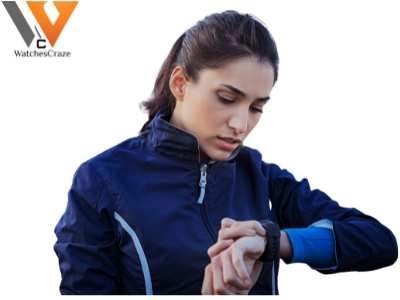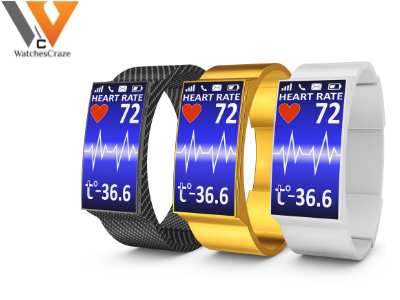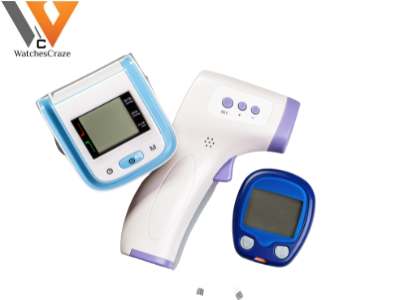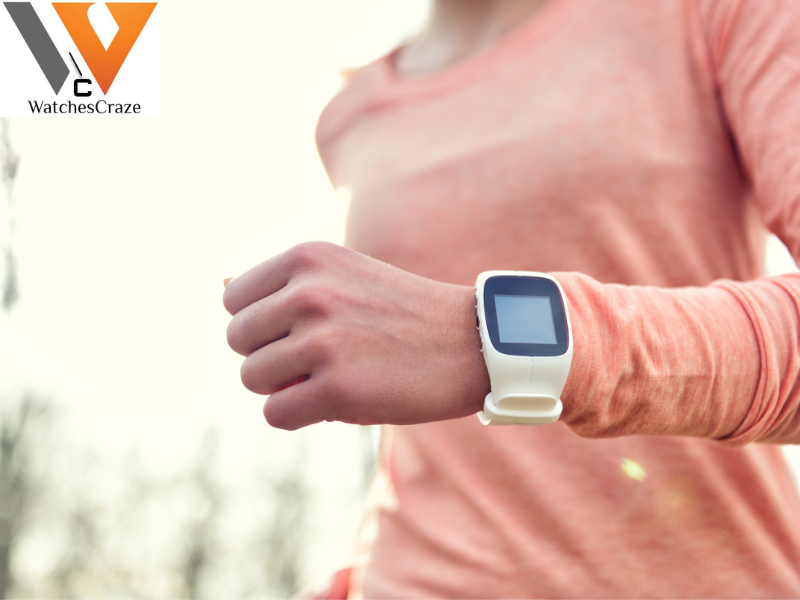How do Pulse Watches Work
Ever wondered about those wrist buddies that not only count your heartbeats but also claim to understand your well-being? That’s the charm of pulse watches, the sidekicks for fitness buffs and health enthusiasts. But, let’s get real – how exactly do these gizmos work their magic?
Basics of Heart Rate Measurement

-
Understanding the Pulse
Imagine your pulse as your heart’s drumbeat, a rhythmic thump you can sense, usually on your wrist or neck. It’s like a heartbeat high-five, your heart saying, “I’m here and doing my thing!” Getting your pulse is more than just a feeling; it’s like tuning into the heartbeat melody, understanding the rhythm of your heart’s performance.
-
Beats per Minute (BPM)
Now, let’s talk about beats per minute or BPM. Think of it as your heart showing off its dance moves. Your heart is like an energetic dancer, and BPM is the number of dance steps it takes in a minute – a simple way to measure the tempo of its dance routine. It’s like checking if your heart is doing a lively jig or a calm waltz, revealing the unique dance style of your internal rhythm.
-
Normal Resting Heart Rate
Even though your heart doesn’t take breaks, it does have a chill mode—your normal resting heart rate. It’s like your heart taking a breather between dance sessions. Understanding your normal resting heart rate helps you know how your heart performs when you’re not actively moving or exercising. It’s your heart’s way of kicking back and relaxing.
Components of Pulse Watches

-
Optical Heart Rate Sensors
Imagine optical heart rate sensors as the magic behind your pulse watch. These sensors use light to see what’s happening under your skin, almost like a tiny flashlight checking in on your blood flow. By catching these subtle changes, they can tell you how fast your heart is beating. It’s like having a mini light show on your skin, and these sensors are the ones making sense of the signals.
-
Electrodes and Chest Straps
Now, think of electrodes and chest straps as the behind-the-scenes heroes of your pulse watch. Electrodes are like small, friendly spies that attach to your skin, quietly picking up on the electrical signals your heart sends out. And the chest strap? It’s the trusty sidekick, making sure everything stays snug and secure. Together, they work undercover to give your pulse watch accurate and reliable information about your heart’s activity.
-
Accelerometers and Gyroscopes
Meet the dynamic duo: accelerometers and gyroscopes, the fitness buddies of your pulse watch. Accelerometers are like movement detectives, keeping an eye on how fast you’re going. Gyroscopes, on the other hand, are the orientation experts, helping your pulse watch understand which way is up. Together, they make sure your pulse watch keeps up with your every move, like having personal trainers right on your wrist.
Factors Affecting Accuracy
-
Skin Tone and Thickness
Consider your skin tone and thickness as the background that your pulse watch reads against. Different skin tones and thicknesses can affect how well the sensors can “see” your blood vessels.
-
Motion Artifacts
Think of motion artifacts as the blurriness in a photo caused by movement. When you’re in motion, be it running or just waving your hands, it can create “artifacts” or disturbances in the data your pulse watch collects. Imagine trying to take a clear photo while dancing – there might be some blurriness. Similarly, when you move, your pulse watch might face challenges in accurately capturing your heart rate.
-
Environmental Conditions
Environmental conditions act like the setting of a stage for your pulse watch performance. Being aware of these environmental factors helps in understanding why your pulse watch’s accuracy might vary in different situations.
Resting Heart Rate

Imagine your resting heart rate as your heart kicks back and relax. It’s like counting how many times your heart beats in a minute when you’re just chilling, not doing much. This number gives you a peek into your heart’s usual rhythm during downtime. A lower resting heart rate is like your heart enjoying a peaceful spa day – a sign of good cardiovascular vibes and overall heart health.
-
Target Heart Rate Zones
Target heart rate zones are your heart’s workout playlists. They’re the heart rate ranges you aim for during different exercises to get the most out of your sweat sessions. Picture it as your heart saying, “This is the tempo for maximum calorie burn and fitness boost.” It’s like finding that perfect rhythm for your workout, where your heart is happily grooving along – not too slow, not too fast, just the right beat.
-
Recovery Rate
Your recovery rate is like your heart’s way of catching its breath after a workout. It’s the cool-down session for your heartbeats. After you’ve exercised, your heart rate gradually goes back to its resting state. A faster drop means your heart is a fitness champ – efficient and ready for the next adventure. It’s like your heart saying, “I’m all set for more action!” Understanding your recovery rate gives you a glimpse into your overall fitness and how resilient your heart is feeling.
Advanced Features
Your pulse watch is like the fitness buddy you never knew you needed. It’s not just counting heartbeats; it’s leveling up, and estimating your VO2 max. Think of it as a sneak peek into your fitness game, showing how well your body handles oxygen during your workout sessions. It’s like having a virtual coach cheering you on, giving you the inside scoop on boosting your endurance and hitting those fitness milestones.
And let’s talk about the stress-tracking superhero feature in your pulse watch. It’s not your typical heart monitor; it’s more like your personal stress detective, keeping tabs on stress levels all day long. It’s not just about heartbeats; it’s about getting to know how stress messes with your well-being. Your pulse watch becomes your mindful sidekick, helping you discover those sweet moments of calm in the middle of life’s daily chaos.
Comparison with Medical Devices
To learn about how do pulse watches work let’s compare it with other medical devices.

-
Accuracy Comparison with Medical Equipment
Your pulse watch is a handy health companion, but how does it stack up against the precision of medical equipment? Let’s dive into an accuracy comparison. While pulse watches provide valuable insights, they might not match the precision of specialized medical devices. We’ll explore how close they get and where the differences lie in terms of accuracy, ensuring you understand the strengths and limitations when compared to medical-grade equipment.
-
Limitations and Considerations
Like any superhero, your pulse watch has its limits. Let’s uncover the limitations and considerations when relying on it for health insights. From factors influencing accuracy to situations where medical-grade devices might be more suitable, understanding the boundaries helps you use your pulse watch wisely. We’ll explore the scenarios where a pulse watch shines and when it’s crucial to seek the expertise of traditional medical equipment for a more comprehensive health evaluation.
Optimal Usage Tips
Here are some tips on how do pulse watches work.
Proper Wear and Placement
- Wrist Fit: Wear your pulse watch comfortably snug on your wrist, ensuring it’s not overly tight or loose for accurate readings.
- Alignment Matters: Position the device on the underside of your wrist, aligning it with your heart for optimal sensor contact.
- Mind the Interference: To prevent interference, avoid wearing the pulse watch over tattoos, scars, or other accessories.
Regular Maintenance
- Stay Clean: Regularly clean your pulse watch, especially after workouts, to prevent dirt or sweat from affecting sensor performance.
- Battery Check: Keep an eye on the battery level and recharge as needed to avoid interruptions in tracking.
- Software Updates: Ensure your pulse watch’s software is up-to-date to access improvements, bug fixes, and new features.
- Strap Inspection: Periodically inspect the straps for wear and tear, ensuring they remain secure and provide reliable sensor contact.
- Sensor Check: Take a moment to check the sensors for any debris or obstruction that could impact accurate readings.
- Read the Manual: Familiarize yourself with the manufacturer’s guidelines and instructions for optimal wear and maintenance.
Conclusion: How do Pulse Watches Work
Pulse watches are not just wrist gadgets; they’ve become like little health pals, telling us secrets about our hearts and helping us stay on the wellness track. They’re not just about checking the time – they’re like our personal health cheerleaders. Whether we’re catching some z’s or getting our heart rate up in a workout, these watches are here for us. So, let’s appreciate them as more than just accessories; they’re our buddies on the journey to a healthier and happier life.
Frequently Asked Question
How do heart rate watches work?
Heart rate watches typically utilize sensors that detect changes in blood flow, usually through light-based technology, to monitor heart rate.
How do watches check pulse?
Watches often use optical sensors to measure changes in blood volume under the skin, reflecting heartbeats and enabling pulse detection.
How to get more accurate wrist heart rate readings?
For more accurate wrist heart rate readings, ensure a snug fit, position the watch about a finger’s width above the wrist bone, and minimize movement during measurement.




